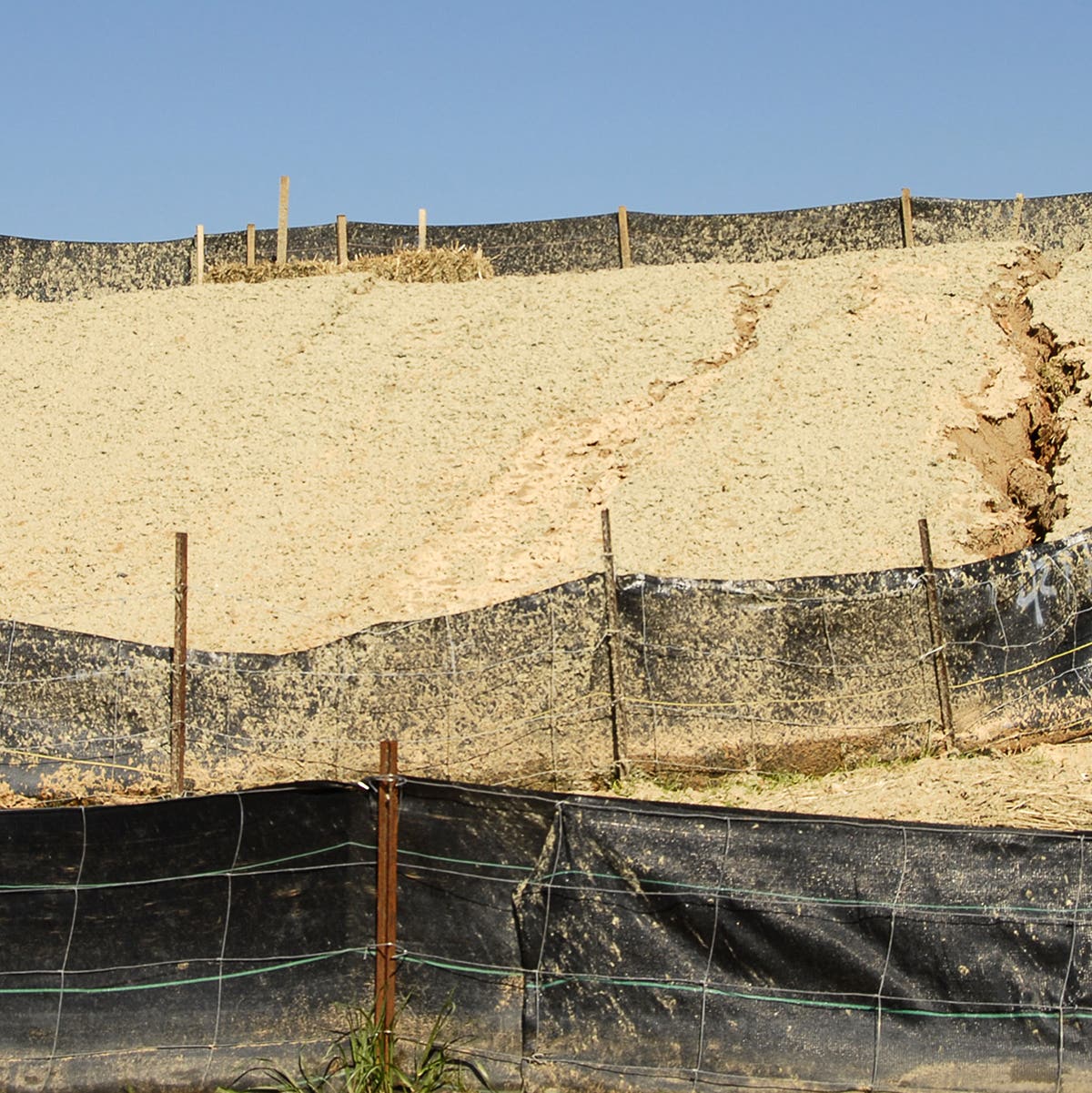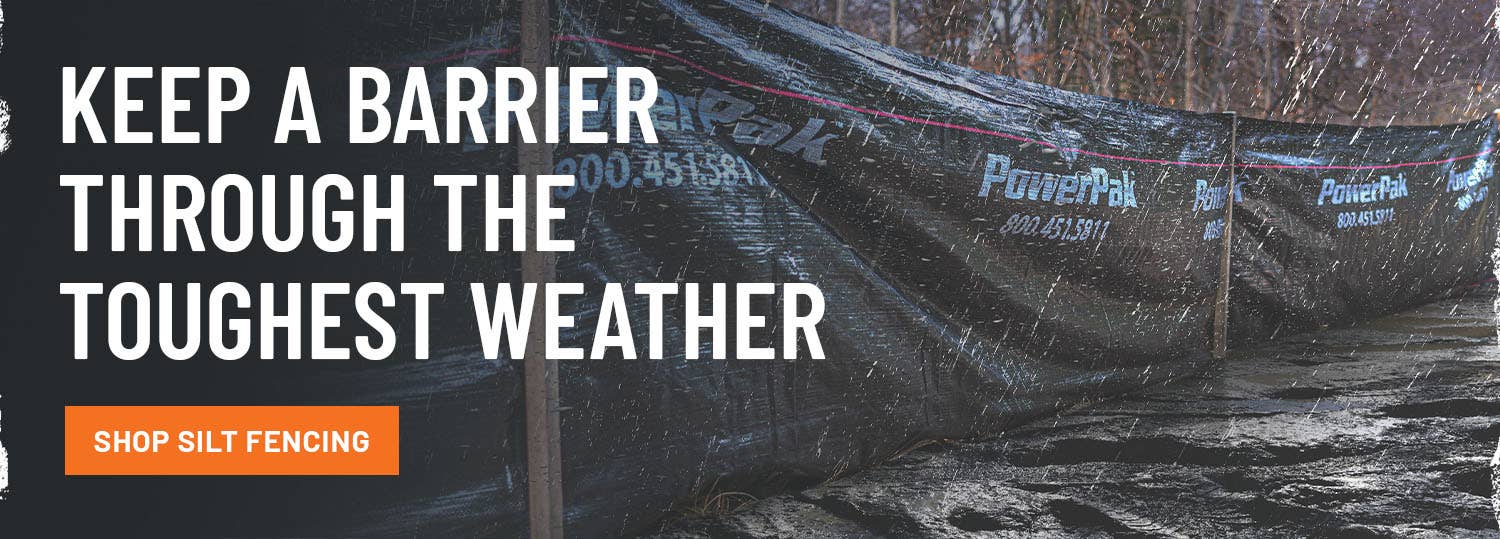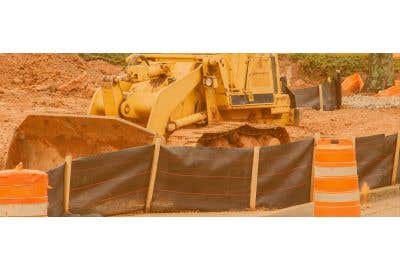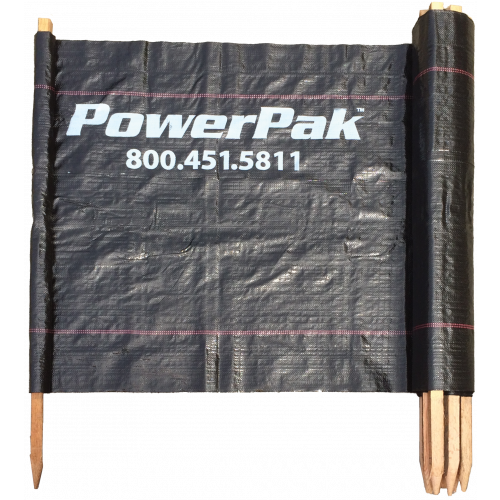*Disclaimer*
The information contained on this page is for promotional and informational purposes only. All equipment should be used by trained professional tradesmen who have been trained how to use the equipment described on this page, and understand the risks of their work. PowerPak assumes no responsibility for errors or omissions in the use or misuse of any product purchased. In no event shall PowerPak be liable for any direct, special, indirect, consequential, or incidental damages or any damages whatsoever, whether in an action of contract, negligence or other torts, arising out of or in connection with the use of this information or the contents of this page. PowerPak reserves the right to make additions, deletions, or modifications to the contents on this page at any time without prior notice.
Table of Contents
Every tier of government wants construction sites to control erosion and water runoff. National agencies like the EPA, state departments like DEC, and local townships and cities all have requirements for erosion control.
And they are serious about it, as seen by the countless fines imposed on construction jobs across the country. Some sites are getting hit with fines totaling hundreds of thousands of dollars. More commonly, sites are cited with a fine and required to clean up or cover the cost of any damages caused by the runoff.
The topic of discussion here is one specific type of erosion control, silt fences. They are a popular way to handle runoff stormwater because they are simple, effective, and affordable.
Before we get into the specifics of silt fences, it’s important to understand that silt fences or any barrier control system are one part of an erosion control system. Many projects may require the implementation of additional control tools and measures.


What’s the issue with erosion?
Construction sites inherently disturb soil and sediment, and disturbed soil is susceptible to erosion. This means that the mound of dirt dug up for a trench is going to partially wash away in the next rainstorm. That muddy sediment-ridden rainwater will flow downhill and wash into a nearby body of water, a storm sewer, or over some nearby land/property.The sediment from that muddy water will contaminate the body of water, clog the storm sewer, or damage the nearby land/property.
Unchecked, this can become a much bigger problem than you realize. A worksite without erosion control can be the direct cause of a chain of events resulting in local ecological issues and costly municipal clean-up. As mentioned before, all tiers of government have no interest in covering these costs.


What is a Silt Fence?
Silt fencing consists of posts (wood or metal) and fabric; the fabric is a geotextile designed to be water permeable. As muddy rainwater passes through the silt fence, the sediment gets held back by the material, and the water passes through free of debris.Silt fences are not the only erosion control method of their type. Some construction sites use straw bales, excavated drops, gravel structures, or other methods. Most find that silt fences, when installed correctly, yield the best benefit-cost compared to other erosion methods of the type.
Before Installing a Silt Fence
Installation is one of the most important aspects of utilizing a silt fence. If the fencing is not installed correctly, it will not work. The fence will fail, erosion will occur, and the jobsite will be held responsible.Before installation, you first need to determine where the fencing needs to be placed. To determine this, you need to know where the excavating will take place, the sloping of the surrounding area, and the location of nearby bodies of water, storm sewers, or damageable property. This includes roadways and unincorporated land. You are essentially establishing where the runoff water will naturally flow.
After you determine the general placement of your silt fencing, you then need to decide the type of run you’ll set up. Commonly you’ll see straight runs of silt fences, similar to any other kind of fencing. Some terrain may require some stretches of silt fencing to be in a J-hook formation.
J-hooks are the preferred practice to avoid very long runs of silt fencing on terrains that would create a concentration of too much runoff in one fencing area, eventually overwhelming it. A series of J-hooks breaks up the long run and creates separate pockets for water to pond and filter through.
Sharp corners should be avoided when plotting out your run, especially in areas that may experience a high flow of runoff water. High flow areas may require additional fencing, like a series of J-hook fencing runs to help separate the flow into multiple sediment build-up areas.
If you are unsure how much fencing you will need, the EPA suggests starting with 100ft of fencing per 10,000 square feet of disturbed soil. After installing your fencing, it should be monitored after each rainfall, and if the fencing is over-flowing, washing out, or too much sediment is building up, additional runs of fencing will need to be installed.
Properly Installing Silt Fencing
Once you've plotted your plan out, you can begin installing your fencing. The first step can be the most time-consuming. A 4” – 12” deep trench needs to be dug out along the route of your fencing. The trench should be around 12” wide. Wider if you aren’t digging very deep.Trenches can be dug out with a shovel, but many use a trenching machine to make quick work of an otherwise laborious process. Most standard silt fences come with wood posts pre-attached. The silt fence posts are hammered into the trench at a depth of 12" – 18".
The excess fabric should be lying inside the trench towards the jobsite, creating a curve. The trench should be refilled with soil, burying the curved part of the fabric. The soil is tamped down to create a secure seal and prevent the fabric from washing up. This process of laying out the extra fabric curved towards the erosion source is why you either need to dig the trench deeper or wider.
Curving the fabric is an often-skipped step. Still, it is important because the curved fabric helps prevent the fencing from failing by providing extra surface area for dirt to weigh down on the fencing fabric. If the topsoil washes away, the curved fabric will prevent most runoff water from passing under the fencing.
If your fencing has been installed correctly, the post should be on the outside (opposite of the disturbed soil).
Alternatively, some opt to use a fence installer, also known as static slice machines. These machines cut a narrow slice in the ground and install the geotextile fabric all in one pass. Unlike the trenching method, you cannot utilize silt fencing that has preinstalled posts. The fabric can be attached to wood posts with staples or to steel posts with plastic ties.
After installation, the fencing should be inspected and checked regularly and after every rainfall.
Types of Silt Fencing
Sometimes silt fences are described as type A, type B, or type C. All three types are often made from the same geotextile fabric. The key difference between Type A silt fencing and Type B silt fencing is the height. Type A is 36" and is commonly used on larger long-term projects, and Type B is 22" and is commonly used on smaller projects.You may be told that your site needs to have Type C silt fencing. Type C is commonly referred to as reinforced silt fence or wire-backed silt fence. Type C fencing is 36" tall and reinforced with wire mesh. This fencing, paired with steel posts instead of wood, can withstand significantly more runoff water.
Certain jobs may require silt fencing that has been tested to meet minimum specifications. This is common for road work. An example of this is road work conducted in New York that needs to utilize silt fencing and erosion control that are NYDOT approved. Manufacturers must send their fencing in for lab testing to meet ASTM standards for UV resistance, flow rate, grab strength, apparent opening, trapezoidal tear, puncture strength, Mullen burst strength, and grab tensile elongation.
Different states will have different specification requirements for silt fencing, geotextiles, and erosion control products.
PowerPak’s Selection
PowerPak offers a full category of geotextiles and erosion control products. When it comes to silt fencing, PowerPak has the options.Our Contractor Grade Silt fencing is an economical option made from durable material and meets ASTM D6461 standards.
If your worksite needs silt fencing that meets New York Department of Transportation standards, PowerPak offers an NYDOT approved Silt Fence and an NYDOT Premium Silt Fence. Both options are 36” x 100’ roll with preinstalled posts, and both options exceed the minimum requirements of the NYDOT. The key difference between these products is the premium option is constructed with a more durable geotextile fabric. Take a look at the spec sheets on our website to compare these two options.
Similarly, PowerPak offers a New Jersey Department of Transportation approved fencing. Our NJDOT Premium Silt Fence is constructed of a high durability geotextile fabric exceeding the minimum requirements of the NJDOT.
If your project requires reinforced silt fencing, PowerPak has a selection of wire-backed silt fencing in 24" and 36" heights with orange and black options. These 100ft rolls do not have preinstalled posts, but 5’ Steel T posts are available separately.
Don’t Skip Erosion Control
It is easy to say that you will implement an erosion control plan and skip it and move on with the project. Some companies choose to ignore erosion control as a cost-cutting measure.Skipping the step is a very risky move. What started as a cost-cutting measure will likely cost multitudes more than the initial cost of prevention. Whether there is rain in the forecast or not, jobsites that do not have proper erosion control measures can be fined. If a storm rolls in, the project will be on the hook for repair and clean-up costs.
If you need guidance on what erosion products you need, contact us at PowerPak. Our team can help solve your erosion control needs.

















